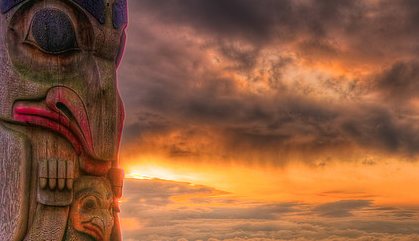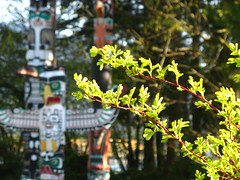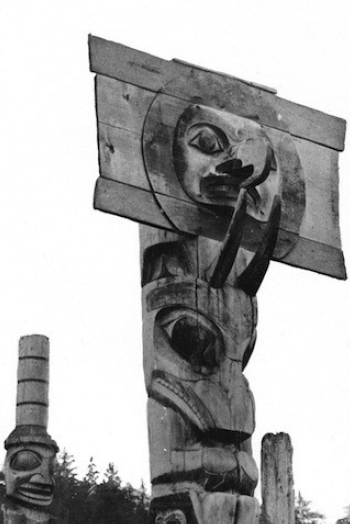Their beautiful, intricate designs have made totem poles an icon of the Northwest Coast. Way before they graced the sides of planes and backs of tourism brochures, however, totem poles played an important role in the region’s indigenous end-of-life tradition.
For hundreds of years, natives of the Northwest Coast honored their dead through the creation of the intricately carved poles. “They were first noticed by European explorers in the 1700s,” says NPR’s Robert Smith, “[but those] totem poles may have been misunderstood. Britain’s Captain James Cook, who encountered totem poles off the coast of British Columbia, called them “truly monstrous figures.” Early missionaries thought the poles were worshipped as gods and encouraged them to be burned.”
“…totem poles may have been misunderstood”
In reality, totem poles served as a symbol of unity and family history for a clan, reminding each member of the invaluable link between the living and their “spirit-ancestors.”
The average height of a totem pole is a towering 70 feet (21.3m), but that wasn’t always the case. The mammoth-sized poles we think of today only became possible as a result of indigenous contact with European explorers (hence European tools). It wasn’t until the 18th century that the poles could be made larger than the size of a walking stick – and gradually, to the size of a tree.
“It wasn’t until the 18th century that the poles could be made larger than the size of a walking stick – and gradually, to the size of a tree.”
Unfortunately, the lifespan of a wooden totem pole is limited. So, in an effort to preserve the heritage of indigenous peoples, carvers began making replicas of decomposing poles while the design was still intact.
Today, a beautiful replica of a Tsimshian memorial pole can be found in northern British Columbia. The replicated pole (the original created in 1800) was carved by Bill Holm in the village of Gitlakhdamks in 1969. The pole is covered with detailed images of a “humanoid bear,” a bird and a sea-bear, all to honor the life of a particular clan chief who has passed on. And, explains the Burke Museum of Natural History, the erection of a pole was also a conspicuous sign that a new chief would soon take over.
“The pole is covered with detailed images of a “humanoid bear,” a bird and a sea-bear, all to honor the life of a particular clan chief who has passed on.”
In many cases, totem poles even contained the actual remains of an important clan member. Known as mortuary totem poles, these monuments “had a cavity in the top which held the burial box inside,” explains Simon Fraser University, “[and the] remains of a chief or high ranking person were placed in the box a year after the death.”
Related Articles:
- Learn more about totem poles from Simon Fraser Univeristy here.
- Visit the Burke Museum of Natural History’s website here.

 Preserving the Totem Poles of the Northwest
Preserving the Totem Poles of the Northwest





 Sara Williams Fights for Affordable Funeral Options
Sara Williams Fights for Affordable Funeral Options
 Dying Inmates’ End-of-Life Choices Are Routinely Ignored
Dying Inmates’ End-of-Life Choices Are Routinely Ignored
 “Dying for Sex,” Starring Michelle Williams and Jenny Slate
“Dying for Sex,” Starring Michelle Williams and Jenny Slate














